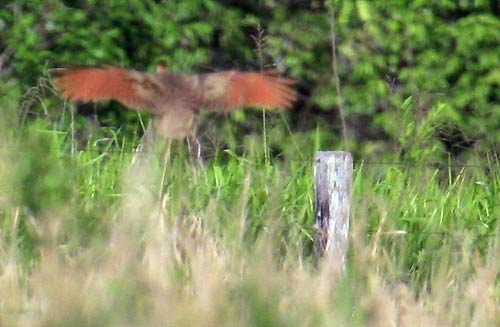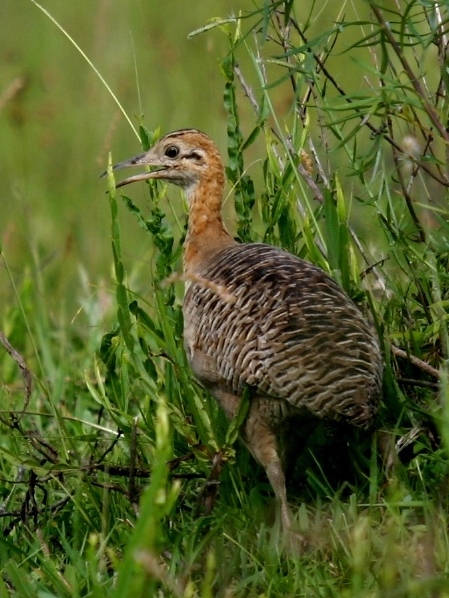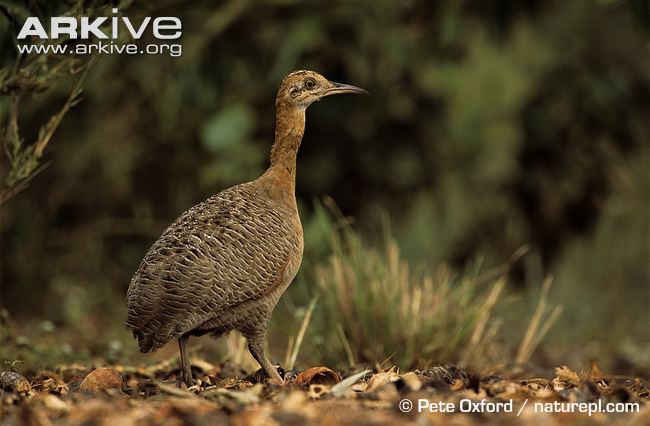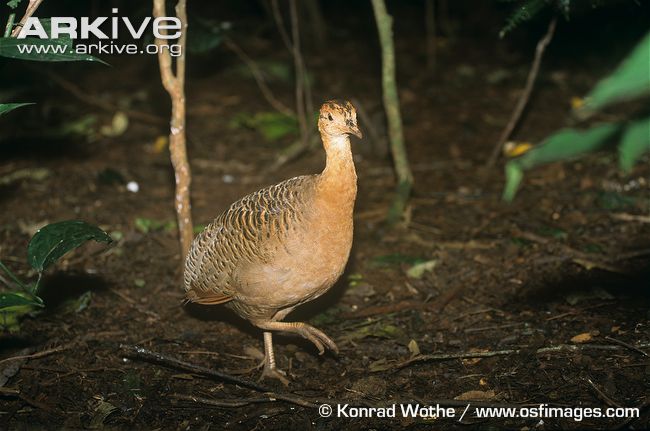
Rhynchotus rufescens
SUBFAMILY
Rhynchotinae
TAXONOMY
Rhynchotus rufescens Temminck, 1815, Sгo Paulo, Brazil. Four
subspecies.
OTHER COMMON NAMES
French: Tinamou isabelle; German: Pampahuhn; Spanish:
Tinamъ Alirrojo.
PHYSICAL CHARACTERISTICS
16 in (41 cm), 1.8 lb (830 g). Female slightly larger. Black
patch on crown; rufous primaries. Light grayish brown to
whitish underneath. May be black barring on flanks, abdomen,
and vent.
DISTRIBUTION
Argentina, Bolivia, Brazil, Paraguay, and Uruguay.
HABITAT
At low altitudes, below 3,300 ft (1,000 m), it lives in damp
grassland and woodland edges; at higher altitudes it is found in
semiarid scrub and cereal fields.
BEHAVIOR
The call, given only by males, is a long, ringing single whistle
followed by shorter, mournful whistles. The birds live dispersed
in the dense vegetation, and are most active in the heat
of the day.
FEEDING ECOLOGY AND DIET
It is sedentary, feeding on the ground on seeds, tubers, and
fruit. In the summer it takes more animal food, including
earthworms, termites, and other insects. It digs for food with
its bill, and so is unpopular on newly sown cropland.
REPRODUCTIVE BIOLOGY
The red-winged tinamou has many displays, the male attracting
one or more females by follow feeding, and always accompanies
the female to the nest when she is to lay. He alone
incubates the eggs and broods the chicks.
CONSERVATION STATUS
Not threatened.
SIGNIFICANCE TO HUMANS
A popular game bird and hunted out in some regions, but elsewhere
common. Because it will live in cropland it has extended
its range alongside agricultural development.
Other popular Animals
Photo Gallery of - Red-winged tinamou




 Animalia Life
Animalia Life